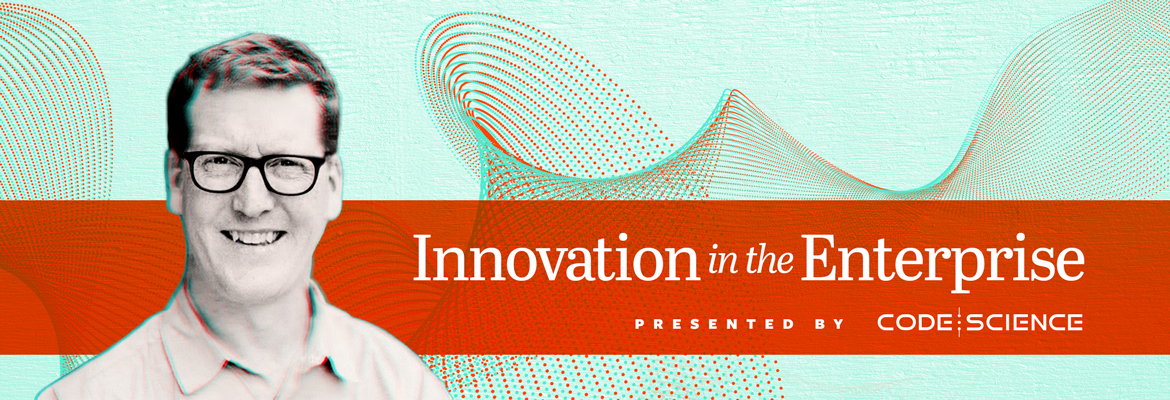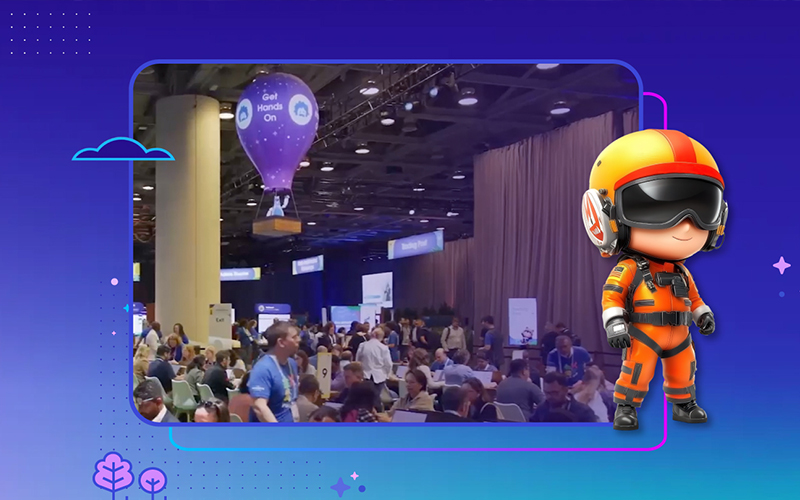
In Episode 3 of our “Innovation in the Enterprise” podcast series, CodeScience CEO, Brian Walsh, speaks with Avanish Sahai, Vice President, ISV & Applications Partnerships for Google Cloud, about how enterprise businesses can leverage platform ecosystems to catalyze innovation, the challenges of transforming internal enterprise IT projects into external products, and the importance of product-focused DNA for successful innovation. Here are our top five takeaways from the discussion, lightly edited for readability.
1. Avanish, on the power of the ecosystem and what brought him to Salesforce to help build out the AppExchange ecosystem:
When Salesforce came calling in 2009, my first reaction was … phenomenal company. I’ve known Marc from Oracle days, have been a customer many a times in all my startups and so on. And I was like, “It’s great, but not something I would necessarily be very fascinated by.” But then they kind of peel the onion around the vision behind the AppExchange, which was, “Hey, we’ve got all these integrations right now, but we think we can expose a real platform. And around that platform, if we can figure out, how do you build an ecosystem? How do you expose this to end customers and how can they innovate on a platform?”
And then to ISVs, that becomes something very powerful because it drives a few things. Frankly, it can drive a business. Two, it drives stickiness, because now … yes, you’ve got incumbent platforms in the database world, in the operating system world and so on. But one of the lines that Marc had always used with us was, “No company has made it to 10 billion dollars of revenue — with a B — without being a platform.” And a platform requires a platform mindset, but it also requires an ecosystem. If nobody builds on it, nobody builds with it, then does it really matter?
2. Brian, on how ecosystems drive innovation for the end customer
I always thought of ecosystems, like when I would think about Microsoft, Intuit, as defensibility. It would provide this huge moat where another platform trying to compete wouldn’t have all of those other companies involved. So there’s a great network effect, as you said, that it causes, but what I’ve learned over time and being in these ecosystems is how much innovation it drives for the end customer. Where it’s not just Salesforce or it’s not just Service Now, it’s not just the core host of that ecosystem, but actually the innovation comes from the edges, from the partners as well. Why does that happen? Why does innovation sort of shift from just being centralized from the one company to all of a sudden innovation actually being heavily weighted on the ecosystem itself?
3. Avanish, on the DNA required to spin out a product-driven mindset from within the enterprise
All these organizations have built very successful, very large, very scaled businesses over time, whether it’s automotive, whether it’s transportation, whether it’s food, logistics, et cetera. And that core DNA understands that business, understands their physical assets, super well. When you move into the technology world that we live in, it does become a different DNA.
So you will have an IT organization typically building something for internal use and helping improve a process, improve visibility, automation control, et cetera. Fantastic. When you think about the next step, which is now to a point, I’m going to build a product. The product now is not a project, which is what IT built. And now you start to think about, I’m going to take this and replicate this to a world of potential customers and buyers but with a whole bunch of other requirements, a whole bunch of other specific situations. And that DNA that exists inside the organization has to change.
4. Avanish, on how to navigate the process of spinning out innovation from within an enterprise organization:
First and foremost, I think you have to identify who are the stakeholders that you can align with your own point of view. Whether it’s at a C-suite, whether it’s the board even, who are some of the folks who can maybe see the world as you see it? Bring them into the tent and have a candid discussion about what those potential options are. And then how do you, again, with maybe not enough information at the get go, but as you get more information, more insights and more data, you say, “Hey, here’s some paths we can take. And here’s trade-offs, here’s the investment requirements and here’s the potential upsides, downsides,” et cetera. So I think first and foremost is identifying that stakeholder group and what some of those potential paths are.
5. Avanish, on why it’s important for enterprise organizations to bring in the right go-to-market DNA and strategy for new product spin-outs:
Maybe my core team is great at selling my core business, but probably not at selling software subscriptions. It’s price point. It’s expertise. It’s enablement. Let’s go back to some of the examples we discussed earlier. If it’s someone who’s in the food distribution business and their sales team manages these large accounts where they’re grocers and retailers and so on, they’re not going to just jump around and say, “Well, now, today, would you like me to replenish your stock? Would you like to buy some software?” That’s not quite how it works.
Check out the podcast to listen to the full episode and view the transcript!
Companies build their Salesforce businesses better with CodeScience. It is our mission that no ISV navigates Salesforce alone. If you’re looking for guidance on your product, help supporting your customers, or just need to ask an expert, get in touch today!


